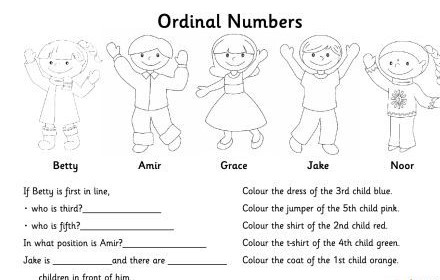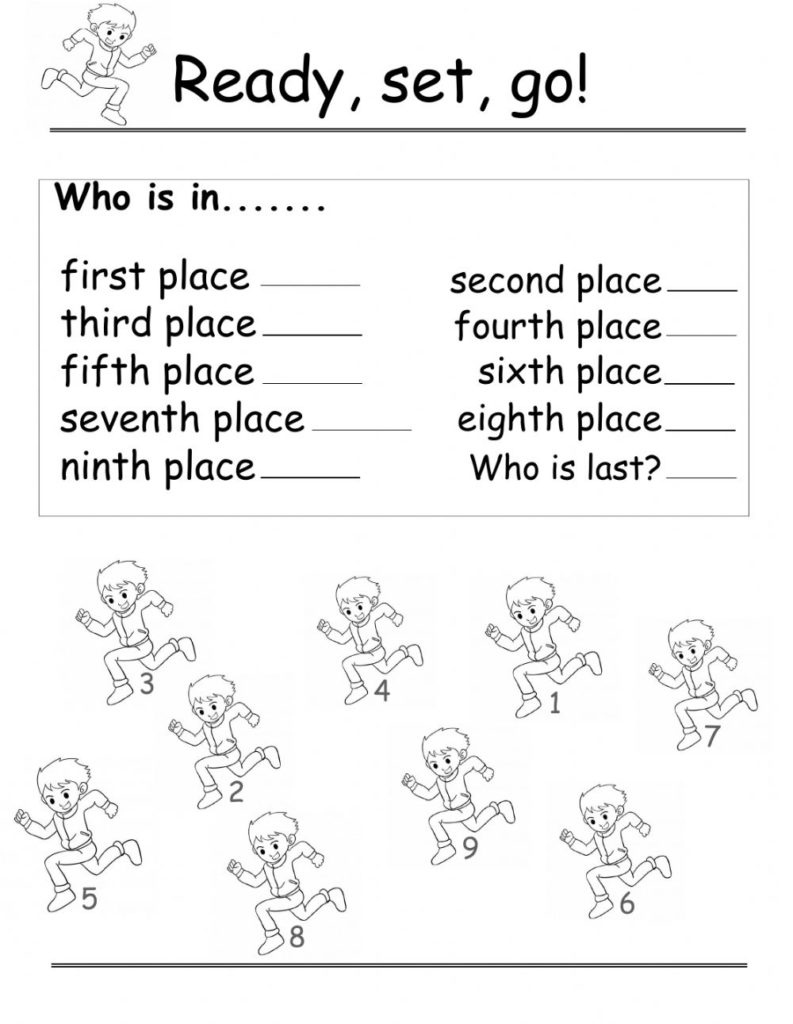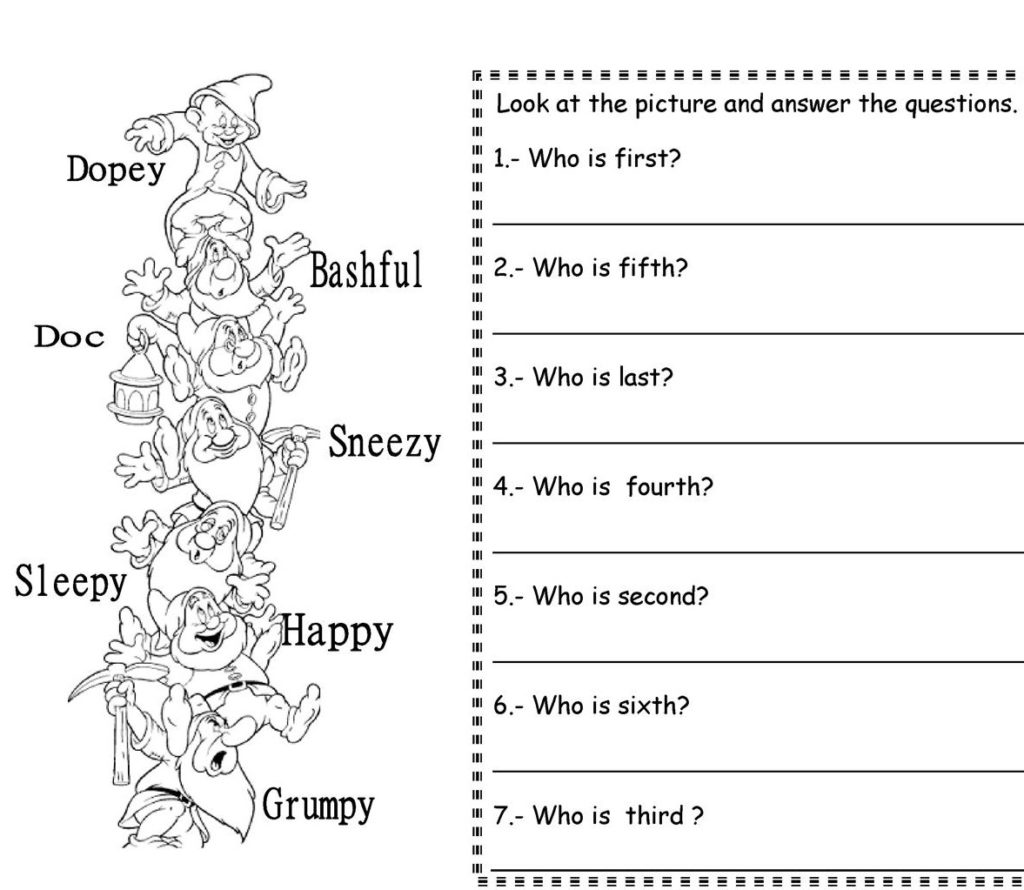Learning about ordinal numbers will help you to find the correct position of the objects. Using this article, we will learn easily how to find the ordinal numbers. Improve your mathematical knowledge and enhance the skills. Ordinal numbers are similar to cardinal numbers. The numbers which give us the precise position of an object are called ordinal numbers. Ordinal numbers tell the position of an object instead of its quantity.
On this page, you will learn about the definition of ordinal numbers, uses of ordinal numbers, types, etc. The ordinal numbers can be written using numerals as prefix and adjective as a suffix.
Also, Read:
Ordinal Numbers – Definition | What are Ordinal numbers?
Ordinal numbers are defined as the numbers which are used in identifying the exact positions of things or place or persons. Ordinal numbers also called Positioning Numbers. If the number of objects or persons is specified in a list then the object or persons is defined by the ordinals numbers. The adjective terms which are used to indicate the order of objects or persons are 1st, 2nd, 3rd, 4th, 5th, 6th, and so on.
Types of Ordinal Numbers
Ordinal numbers are two types, which are used to represent things or objects, or peoples. The below given the types of ordinal numbers,
- Cardinal Numbers
- Nominal Numbers
Cardinal Numbers: A cardinal says what percentage of something, like one, two, three, four, five, and etc., cardinal numbers example is, here are five coins, it does not have fractions or decimals, it’s only used for counting. Simple says cardinal numbers are counting.
Nominal Numbers: A nominal number could be a number or more specifically a numeral that’s used as a label or some way of identifying something. Nominal numbers are usually discussed together with cardinal numbers and ordinal numbers. The example of nominal numbers vehicles numbers like KA 06 2212, pin codes of cities, and so on.
Ordinal Numbers Chart from 1 to 100
The reprsentation of numbers from 1 to 100 in the form of ordinal is known as ordinal numbers from 1 to 100. The ordinal numbers from 1 to 100 is given in the tabular form as shown below,
| 1st | First | 21st | Twenty- first | 41st | Forty- first | 61st | Sixty- first | 81st | Eighty- first |
| 2nd | Second | 22nd | Twenty- second | 42nd | Forty- second | 62nd | Sixty- second | 82nd | Eighty- second |
| 3rd | Third | 23rd | Twenty- third | 43rd | Forty- third | 63rd | Sixty- third | 83rd | Eighty- third |
| 4th | Fourth | 24th | Twenty- fourth | 44th | Forty- fourth | 64th | Sixty- fourth | 84th | Eighty- fourth |
| 5th | Fifth | 25th | Twenty- fifth | 45th | Forty- fifth | 65th | Sixty- fifth | 85th | Eighty- fifth |
| 6th | Sixth | 26th | Twenty- sixth | 46th | Forty- sixth | 66th | Sixty- sixth | 86th | Eighty- sixth |
| 7th | Seventh | 27th | Twenty- seventh | 47th | Forty- seventh | 67th | Sixty- seventh | 87th | Eighty-seventh |
| 8th | Eighth | 28th | Twenty- eighth | 48th | Forty- eighth | 68th | Sixty- eighth | 88th | Eighty- eighth |
| 9th | Ninth | 29th | Twenty- ninth | 49th | Forty- ninth | 69th | Sixty- ninth | 89th | Eighty- ninth |
| 10th | Tenth | 30th | Thirtieth | 50th | Fiftieth | 70th | Seventieth | 90th | Ninetieth |
| 11th | Eleventh | 31th | Thirty-one | 51th | Fifty-one | 71th | Seventy-one | 91th | Ninety-One |
| 12th | Twelfth | 32nd | Thirty- second | 52nd | Fifty- second | 72nd | Seventy- second | 92nd | Ninety- second |
| 13th | Thirteenth | 33rd | Thirty- third | 53rd | Fifty- third | 73rd | Seventy- third | 93rd | Ninety- third |
| 14th | Fourteenth | 34th | Thirty- fourth | 54th | Fifty- fourth | 74th | Seventy- fourth | 94th | Ninety- fourth |
| 15th | Fifteenth | 35th | Thirty- fifth | 55th | Fifty- fifth | 75th | Seventy- fifth | 95th | Ninety- fifth |
| 16th | Sixteenth | 36th | Thirty- sixth | 56th | Fifty- sixth | 76th | Seventy- sixth | 96th | Ninety- sixth |
| 17th | Seventeenth | 37th | Thirty- seventh | 57th | Fifty- seventh | 77th | Seventy- seventh | 97th | Ninety- seventh |
| 18th | Eighteenth | 38th | Thirty- eighth | 58th | Fifty- eighth | 78th | Seventy- eighth | 98th | Ninety- eighth |
| 19th | Nineteenth | 39th | Thirty- ninth | 59th | Fifty- ninth | 79th | Seventy- ninth | 99th | Ninety- ninth |
| 20th | Twentieth | 40th | Fortieth | 60th | Sixtieth | 80th | Eightieth | 100th | Hundredth |
Uses of Ordinal Numbers
Ordinal numbers accustomed to ordering the objects or person and position items and numbers, perhaps to mention say which position is coming from during a race or to recite numbers or place numbers on a number line or timeline. Consider an example, we use the ordinal numbers in the following ways:
- Sita always comes 1st in the class.
- Reena is standing in 3rd place in the queue.
- Sony came 2nd in the race.
- The 7th table is reserved.
Difference between Cardinal Numbers and Ordinal Numbers
A list of cardinal numbers and ordinal numbers difference is given below in the form of a table for better understanding.
Practice Questions on Ordinal Numbers
Question 1:
Read the given question carefully. Write the answers in the below given ordinal numbers question.
 Question 2:
Question 2:
Observe the given figure clearly and write the answers of kids’ places in the given figure blanks.
 Question 3:
Question 3:
Look at the given figure and observe the images, write the answers to the given questions on the figure.

Frequently Asked Questions on Ordinal Numbers
1. What are the types of ordinal Numbers?
Ordinal numbers are two types, which are used to represent things or objects, or peoples. The below given the types of ordinal numbers,
- Cardinal Numbers
- Nominal Numbers
2. What are the Differences between ordinal Numbers and Cardinal Numbers?
The difference between ordinal numbers and cardinal numbers is given below,
Ordinal Numbers:
- The order and arrangement of numbers is 1st, 2nd, 3rd, 4th, 5th, 6th, and so on
- Number order criteria can be size, position in a race, age, time of day.
- Names the position of the numbers place i.e., 2 would be called second, four – fourth
- Ordinal knowledge and thinking provide opportunities for more challenging experiences.
- Ordinal Numbers only show ranking not how many.
Cardinal Numbers:
- Cardinal Numbers known as Counting numbers.
- Cardinal Numbers are used to expressing the amount i.e., measure sets tell how many.
3. How do you explain ordinal numbers?
The numbers which give us the precise position of an object are called ordinal numbers. ordinal numbers tell the position of an object instead of its quantity.
Make your kids even more interested in Math Activities by taking help from our fun-learning Kindergarten Math Curriculum, Worksheets, Activities, Problems, Fun Games
